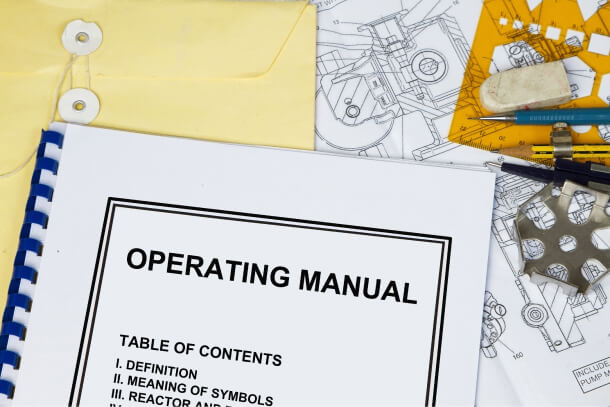
Basic Technical British (STE) has appeared as an essential software in the complex writing business, designed to enhance the quality and readability of specialized documentation. Actually created for the aerospace business, STE has since been adopted across different areas, helping businesses connect complex technical information more effectively. This article examines the roots, axioms, and purposes of Basic Complex English, displaying its effect on global technical communication.
Basic Complex British, also called ASD-STE100, was created in the 1980s by the Aerospace and Defence Industries Association of Europe (ASD). Their major purpose was to standardize complex certification across the aerospace business to reduce the chance of misinterpretation by non-native Simplified Technical English speakers and make certain that technical recommendations were obvious and simple to follow. Provided the complexity and large limits associated with aerospace procedures, the necessity for a standardized and refined type of English became apparent.
The initial version of STE was predicated on present simple language directions utilized in various industries, but it was particularly designed to meet up the requirements of the aerospace sector. Through the years, STE has been changed and widened, with the present edition, ASD-STE100, being widely recognized and utilized in different industries beyond aerospace, including defense, manufacturing, and software development.
Simple Specialized British is governed by some core axioms and guidelines that help writers make distinct, brief, and unambiguous specialized documentation. These rules are created to produce the writing easier to read and understand, particularly for non-native English speakers.
Managed Language: STE restricts the language to a couple of accepted words, each with a certain meaning. That managed language helps remove ambiguity and guarantees uniformity across complex documents. Authors are prompted to make use of only these accepted words and in order to avoid synonyms, which can confuse readers.
Simple Word Design: STE advances the use of simple, simple sentence structures. Phrases should really be clear and strong, preventing complicated or substance phrases which could confuse the reader. The usage of productive style is prompted, as it makes instructions more strong and easier to follow.
Consistency: Uniformity is really a key concept in STE. Writers are advised to utilize the same terminology and framework within a document. This helps visitors construct familiarity with the terms and words applied, reducing the likelihood of misinterpretation.
Technical Precision: While STE simplifies language, it generally does not bargain on specialized accuracy. The goal is to communicate complex complex information in ways that’s quickly understood without losing the primary technical details. Writers are encouraged to offer precise and appropriate explanations utilising the accepted vocabulary.
Avoidance of Idiomatic Words: Idioms and colloquialisms are prevented in STE since they may not turn properly across countries or languages. As an alternative, authors are prompted to make use of clear and literal language which can be quickly recognized by all readers.
While STE was basically developed for the aerospace industry, their programs have extended to some other sectors. Nowadays, STE is found in industries such as safety, production, oil and fuel, and software development. The maxims of STE are specially important in industries wherever technical reliability and understanding are critical.
Aerospace and Protection: In aerospace and defense, wherever security is paramount, STE assists ensure that technical books, maintenance instructions, and detailed techniques are clear and unambiguous. That decreases the danger of misinterpretation and increases safety.
Production: In the production industry, STE is employed to create apparent and regular complex certification, including person manuals, assembly recommendations, and preservation guides. This helps ensure that all workers, regardless of the indigenous language, can realize and follow directions accurately.
Software Progress: In the program industry, STE can be used to generate user-friendly paperwork for complicated application products. By simplifying specialized language, STE causes it to be easier for consumers to know pc software functionalities and troubleshoot issues.
Globalization and Localization: As companies increasingly run on a worldwide degree, the requirement for apparent and consistent specialized documentation has grown. STE facilitates the globalization and localization of specialized documents by lowering the complexity of language, making it simpler to turn and modify material for different markets.
The ownership of Simplified Complex English presents several significant benefits to businesses and visitors alike: Increased Clarity and Readability: By simplifying language and utilizing a controlled vocabulary, STE makes specialized papers simpler to learn and understand. This decreases the likelihood of misinterpretation and errors.
Decreased Interpretation Charges: Simplified language now is easier and quicker to change, primary to lower interpretation costs. Additionally, the uniformity and quality of STE lower the need for intensive changes during the interpretation process.
Improved Security and Conformity: In industries where safety and compliance are critical, STE ensures that instructions and procedures are obviously understood by all workers, lowering the chance of accidents and ensuring conformity with industry regulations. Improved Performance: Obvious and concise certification allows employees to comprehend and follow recommendations more quickly, leading to increased effectiveness and productivity.
Simplified Complex English represents an essential position in increasing global specialized conversation by providing a standardized approach to publishing distinct and concise specialized documentation. Its principles of managed terminology, easy syntax, reliability, and complex reliability allow it to be an important instrument for industries where clarity and precision are essential. As globalization remains to operate a vehicle the requirement for efficient cross-cultural interaction, the significance of STE in complex publishing will probably grow, ensuring that complicated specialized data is accessible and understandable to audiences worldwide.
